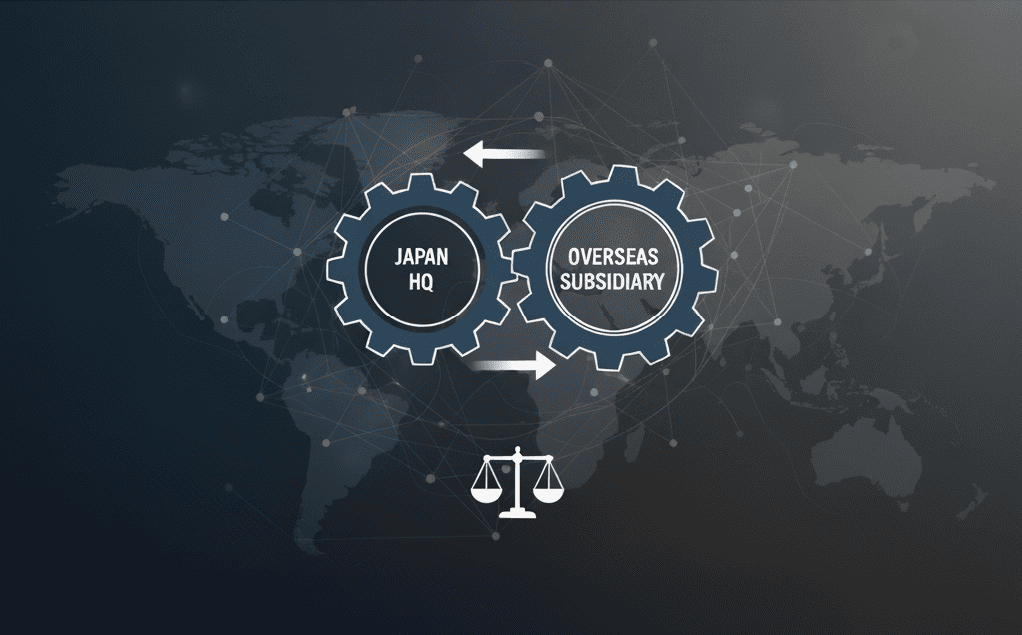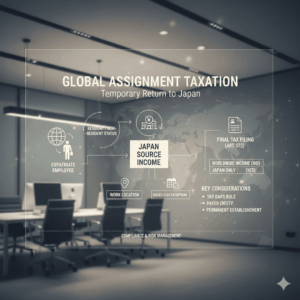Transfer Pricing Compliance Guide for Small and Medium Enterprises: Essential Implementation Strategies
For small and medium enterprises (SMEs) expanding overseas, compliance with transfer pricing regulations has become an unavoidable and critical business challenge. In recent tax audits, even smaller companies have found themselves subject to transfer pricing scrutiny, and inadequate preparation can lead to significant tax risks and financial exposure.
This article provides essential knowledge about transfer pricing regulations that SME managers and accounting staff should understand. We particularly focus on the unique challenges faced by small and medium enterprises with proprietary products in their international business development, along with detailed solutions to address these challenges.
What is Transfer Pricing? Fundamental Concepts SMEs Must Understand
Transfer pricing regulations are tax rules that adjust pricing differences when companies engage in transactions with overseas subsidiaries or related entities at prices that differ from normal market prices (arm’s length prices), ensuring taxation on appropriate profit levels. The purpose of this system is to prevent artificial profit shifting within corporate groups and ensure appropriate tax revenue collection in each country.
Specifically, this applies to the following types of transactions:
Trading Transactions: This includes export sales, import purchases, outsourcing costs (manufacturing contracts), and other tangible goods and product trading transactions. Examples include selling specialized parts developed in Japan to a Chinese subsidiary, or importing products manufactured by a Southeast Asian subsidiary for sale in Japan.
Service Provision: This covers royalty income, commission exchanges, various support fees, and other intangible asset provision or service provision activities. Typical examples include technical guidance, management support, brand licensing, and system provision.
Essential Initial Verification Process
In transfer pricing compliance, preliminary risk assessment with tax audit considerations is indispensable. First and foremost is “understanding the overall picture.” Obtain financial statements from overseas subsidiaries for approximately five years if possible, and conduct comparative analysis with the Japanese parent company’s financial statements for the same periods. This enables early determination of which entity—parent or subsidiary—has potential tax risks.
Specific verification items for trading transactions include detailed understanding of profit allocation concepts between parent and subsidiary companies, trading conditions, and transaction pricing determination processes. For service provision, it’s crucial to confirm the determination process and rational basis for service fees, amounts, ratios, and rates.
This initial verification helps determine how much actual transactions deviate from ideal conditions and whether such deviations can be rationally explained. Importantly, the goal is not merely to identify problems but to implement appropriate countermeasures.
Arm’s Length Price Calculation Methods and SME Realities
The core concept of transfer pricing regulations is the “arm’s length price.” This refers to the price that would be established between independent, unrelated enterprises under similar circumstances. In other words, it requires objective calculation of “what price would be charged if the parties were not in a parent-subsidiary relationship.”
While six arm’s length price calculation methods are legally defined, in practice, SMEs most commonly select the “Transactional Net Margin Method” (TNMM). This is because SME overseas expansion often focuses on “niche” products and services, making it extremely difficult to find comparable transactions for the basic three methods (Comparable Uncontrolled Price Method, Resale Price Method, and Cost Plus Method) which require strict similarity criteria.
| Calculation Method | Characteristics | SME Applicability |
|---|---|---|
| Comparable Uncontrolled Price Method | Compares with third-party transaction prices of identical products | Difficult to apply due to difficulty finding comparables |
| Resale Price Method | Deducts appropriate margin from resale price | Difficult to set appropriate margin rate |
| Cost Plus Method | Adds appropriate markup to costs | Difficult to set appropriate markup rate |
| Transactional Net Margin Method | Compares using financial indicators like operating profit margin | Most frequently selected practical method |
The Transactional Net Margin Method statistically calculates appropriate profit level ranges from financial data of independent enterprises with similar functions and risks. It offers flexibility to accommodate SME-specific circumstances through difference adjustments and can respond to realistic pricing scenarios.
Activities Considered Service Provision Transactions: Critical Areas of Attention
Various support activities conducted within corporate groups may be considered “service provision transactions” under transfer pricing regulations. These include planning and coordination, budget management and financial advisory, accounting, auditing, tax and legal services, information communication system operation and management, manufacturing, sales and marketing support, employee management, and advertising and promotional activities.
Particular attention is required when parent companies dispatch employees to provide equipment maintenance and employee training after overseas subsidiary factory completion. When appropriate compensation is not received for these activities, tax treatment varies depending on the reason and whether contracts exist.
When contracts are not concluded and such work is performed as the parent company’s responsibility, it may not immediately be recognized as a donation but could become subject to transfer pricing regulations. However, when service provision contracts are concluded but compensation is not collected to support the subsidiary financially, this risks being treated as a donation to foreign related parties, resulting in non-deductible expenses for the parent company.
Contemporaneous Documentation Requirements and Local File Importance
Under transfer pricing regulations, companies have an obligation to create and maintain “Local Files”—documents necessary for calculating arm’s length prices. This contemporaneous documentation requirement applies when transaction amounts with a single foreign related party exceed 5 billion yen, or intangible asset transaction amounts exceed 300 million yen. However, even SMEs below these thresholds are essentially required to prepare documentation.
The reason is that during tax audits, when tax officers request Local File submission based on Corporate Tax Law Article 22 and other provisions, failure to submit within the specified deadline (usually within 30 days) may result in estimated taxation. Estimated taxation is a system where tax authorities unilaterally estimate income amounts for taxation purposes, often resulting in highly unfavorable outcomes for companies, making advance preparation essential.
Local File contents consist of two elements: details of foreign related transactions (asset specifications, service content, functional and risk analysis of transaction parties, compensation setting methods, etc.) and documents related to arm’s length price calculation (selected calculation method, assumptions, comparable transaction selection process, etc.).
Practical Considerations and Comparable Transaction Research
In transfer pricing practice, selecting the Comparable Uncontrolled Price Method when comparable transactions can be found is most direct and ideal. However, due to SMEs’ “unique” business characteristics, the Transactional Net Margin Method must often be selected in most cases.
What’s crucial is regular review and revision of established prices and standard royalty rates. Particularly in emerging markets, there are frequent cases where overseas subsidiaries face tax risks due to technology obsolescence challenges. Continuous monitoring and timely price adjustments are essential for international tax risk management, with preparation of objective and persuasive supporting documentation being critical.
Conclusion: The Critical Importance of Transfer Pricing Compliance for SMEs
Transactions with overseas subsidiaries are subject to transfer pricing regulations in both parent and subsidiary countries, and interest in transfer pricing has increased in recent SME tax audits. Demand for Local File preparation is steadily growing among SMEs, making appropriate response an urgent priority.
Local File preparation by Japanese parent companies not only reduces their own tax risks but also helps protect overseas subsidiaries from transfer pricing tax risks. Understanding this importance and implementing adequate measures is strongly recommended.
While we strive for accuracy in the content of this website, it is based on laws and regulations as of October 14, 2025 (Reiwa 7) and represents the author’s analysis. We make no warranty regarding its accuracy, completeness, suitability for any purpose, or any other aspect. Furthermore, we do not track legal amendments after this date. We accept no liability whatsoever for any damages arising from actions taken or not taken based on this website or the materials contained herein.










